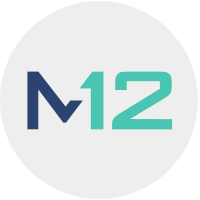Last month, we kicked off The Runway Series, a new set of events that provides founders with insights to help their businesses scale.
In Episode 1, Growth round fundraising: Strategies and metrics that matter, we were lucky to be joined by CEO of WorkBoard Deidre Paknad and General Partner at B Capital Group Rashmi Gopinath. Deidre has founded and led three startups—most recently raising over $140 million from investors including Andreesen Horowitz, SoftBank Vision Fund, and M12. Rashmi has led B Capital’s investments in high-growth companies including DataRobot, FalconX, and Clari.
Here are the five main takeaways from the discussion:
The growth financing landscape has changed drastically with new investor entrants and mega funds.
It’s no secret there has been a dramatic shift in venture capital over the last year. The market is flooded with funding, and these dynamics have changed the very definition of a growth round. A few years ago, growth financing might be defined as Series C or beyond, or a $25 million+ fundraise. According to Rashmi, those classifiers are now outdated. Some early-stage companies are now raising $50 million Series A rounds, while Series B rounds are north of $100 million. Instead of relying on traditional checkpoints, Rashmi’s milestone markers for a growth round include a clear demonstration of product-market fit, or the point at which growth capital can be infused to accelerate sales repeatability. B Capital specifically looks for companies with over $3 to $5 million in ARR. But most critically, at the growth-stage, they want to see a proven and established go-to-market engine.
So why has there been such a massive influx of capital into the market over the last 18 to 24 months? Simply put, a lot of funds have raised a lot of money. And as Rashmi shared with us, there are several new types of funds that typically would not play in the growth equity markets, including hedge funds, crossover funds, and direct investments from LPs. Many of these larger funds are joining earlier stage financing rounds, too. And it’s more common to see late-stage firms participate in Series A and Series B rounds as well.
These funds are typically entering the venture growth market with a public equity software index strategy. They take positions across many companies, occasionally even competitors, and their diligence process is comparatively short. Given the smaller check sizes relative to total AUM, larger funds can move fast, and growth-stage deal timelines have reduced considerably as a result. In the past, it would take a month or two to go through a full diligence process for a growth deal. Now, that has shifted to literally days—maybe a week or two at most.
Building relationships with investors before you fundraise is the #1 tactic for success.
For Deidre, the easiest way to prepare for a growth round is to spend time getting to know investors early—before you start fundraising. This is even more important considering the compressed diligence timelines.
When meeting investors, focus on building genuine relationships and getting to know how they think and operate. Do you enjoy the idea of working with this person over many years? Will they bring unique skills and perspectives to your company and board? Does every partner operate on their own, or are investment decisions made by committee? It takes time to answer these questions; trying to evaluate potential investors while in the throes of fundraising will make the process too transactional and awkward.
Regardless of where you are in your company lifecycle, Deidre advises identifying a small group of potential investors and meeting with them every quarter, even if it’s only for 20 minutes. Are they keeping up with your market? Do they have any unique observations that indicate they are paying attention closely? And most importantly: did you enjoy the conversation? As you can imagine, investors are going through a very similar and parallel thought process. Rashmi confirmed her team builds relationships with companies as early as the seed stage to get to know founders over time, and that this is the most important thing for setting the stage for a successful raise.
Both Rashmi and Deidre encouraged founders to really think hard about the people—not the firms—they have around the table. Considering the five-, seven-, ten-year relationship, who do you want in your corner if the market turns, or if your company’s growth slows down?
Run a tight fundraising process to create scarcity and urgency.
Deidre’s advice to create urgency while fundraising is to kick off the process with all potential investors on the same day. Indicate that you’re starting the process and invite potential investment partners to explore the investor deck and data room. All potential investors get access to the same diligence, so your team won’t be randomized, tracking down new or curated information for individual firms. This coordinated start naturally creates a bit of pressure in the process. Because everyone begins the diligence process at the same time, you’ve created a race to the finish; firms can’t take their time if they want to be competitive. By using your existing investor relationships wisely, kicking off your fundraising process doesn’t need to be a heavy lift. Once you share your intent to raise with warm connections, competitive dynamics will kick in, and investors will be pulling for your diligence materials—you won’t have to do as much proactive promotion.
CEOs running a fundraising process should attempt to minimize its impact on other company employees. To do this effectively, keep your financials consistently updated and use the same format for all your customer contracts to make the diligence process easy and efficient.
Enforce the metrics that drive your business, and only spend time with investors who buy into your vision.
Deidre encouraged founders to use their own metrics and communicate exactly what drives their businesses. Rather than focusing too much on traditional SaaS metrics from the get-go, lead with your company’s core levers of growth.
For example, at WorkBoard, land and expand performance is a leading indicator of growth efficiency. The first dollar of ARR becomes five within 260 days. The company’s net retention of 152%, one of the only numbers Deirdre consistently tracks, very clearly sets them apart from peers. While there are traditional SaaS metrics that many investors request, the importance of these vary for different business models and at different stages. Focus on your company’s priority business drivers, use them consistently with your management team, and convey them to investors early.
Additionally, one of the most important things you can do in the fundraising process is walk away if a firm or investor clearly doesn’t “get it.” You don’t want someone at the table who limits your vision or can’t fully imagine what you’re trying to build. Convincing someone to buy into your vision is too much work—both during a fundraising process and down the road. Don’t waste time on these investors. Instead, focus your attention on people who give you energy and expand your thinking.
Using these tactics, WorkBoard’s Series C closed with Andreesen Horowitz within three weeks; their Series D with SoftBank Vision Fund was done in 72 hours.
Consider corporate investors that are a fit for where your company is heading.
Bringing on new investors should be more about your future vision for the business versus the company you’ve already built. When WorkBoard first started to raise money, Deidre was looking for investors who could help deliver on her vision at the time: to build an enterprise software business with global scale that would impact every employee. Microsoft and Workday were two corporations that had charted paths similar to Deidre’s vision, and both companies soon joined the cap table.
Once WorkBoard reached their Series D fundraise, Deidre and team had already built a strong list of big tech partners and customers, checking many boxes on her original vision for the company. She decided to look at other industries into which WorkBoard could expand—like financial services—and focused on the strongest corporate investors and networks in that area. That’s when Capital One and Silicon Valley Bank came into the picture.
Deidre explained that these corporations have been strong partners and helped accelerate WorkBoard’s business, but flagged that engaging big enterprises takes preparation. Enterprise partnerships can quickly consume lots of time and resources, so it’s important to get clear on your goals for the engagement. Ensure your company has the proper staffing and scale to make the most of the opportunity before diving in.
We’d like to extend sincere thanks to both Rashmi and Deidre for joining our inaugural Runway Series event, and for sharing their insights and experiences.
If you have an idea for an upcoming episode of The Runway Series, please let us know! Get in touch on Twitter at @m12vc and @adamcoccari.

